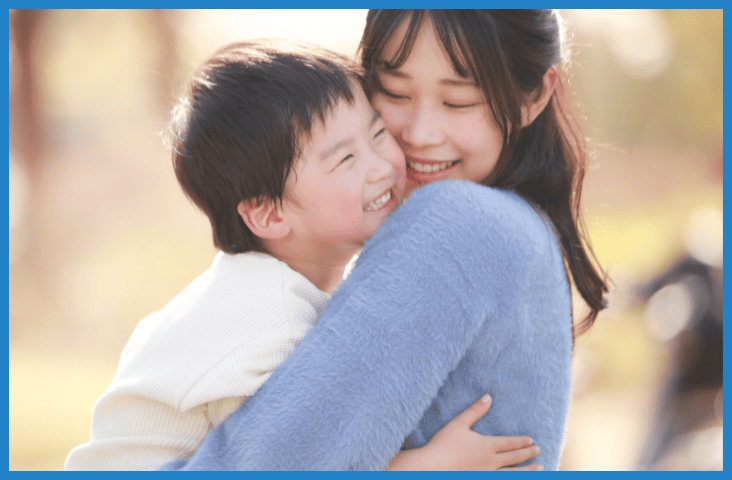
Self-regulation. What is it and why is it important?
We have all heard the term self-regulation, but what does this term really mean and how does it impact us as caregivers of young people?
Perhaps more importantly, how can we encourage self-regulation in those around us, particularly in moments of big feelings and behaviours.
Let’s not sugar coat it, caring for children, their emotions and your own emotions can be really tough, we are all only human after all. We are often faced with big emotions, big behaviours and little time to prioritise our own needs, leading to our own emotional burnout. What often keeps us going though, is the knowledge that without us as role models in this process, how are children to learn the skills let alone navigate it alone?
Let’s start by going back to the very beginning though, to understand how we get to a place of self-regulation. When a baby is born, they live within a relationship of ‘them-regulation’, whereby those in their lives fulfil all of their needs. When an infant cries, as carers we pick them up, we rock them, soothe them, and help them to calm and regulate their bodies in times of stress. This infant is totally reliant upon us for survival, and this is something we don’t second guess.

As these children grow older, they start to become more active in the regulation process as they offer verbal and non-verbal cues regarding their likes and dislikes. The growing child prefers to jump, roll, run and move, rather than be held and this increase in movement causes them to become tired. As adults, we understand that exhaustion leads to less control over our emotions, as is the same for these young people. When their emotional load becomes too heavy, instinctively children reach out to those they trust, to share this load. Whilst this makes sense, this additional load can inherently create more anxiety in the person carrying it.
Throughout the process of co-regulation, it is important to be aware that children match the energy of the carer and therefore children often mirror our emotions. For example, when an adult becomes anxious, the child matches their energy due to an increase in adrenalin, causing a spike in big emotions. Whilst it’s challenging not to lose our patience, these are the moments where we can mentor and build lifelong strategies for children to use well into adulthood.
There are many different strategies that carers can provide to infants and children that will support them in developing foundational self-regulatory skills. These can then be expanded on as the child’s needs grow and develop over time. As carers, if we begin by building our own toolbox of strategies to call upon during difficult times, this can in turn support our own levels of frustration and anxiety through the process. Unfortunately, though, we don’t always have all the answers, and that is ok. There are many tools that we can use to support the development of self-regulation in others which will hopefully make this process as manageable as possible.

1) Be a safe space
This could be promoted through providing children with a warm and responsive relationship. When adults demonstrate care and affection and display understanding in times of stress, this assists in building trusting relationships with children. Showing interest in a child’s world and demonstrating respect for them as an individual will also role model the idea of unconditional understanding and commitment.
2) Think about the environment
When thinking about an environment that is physically and emotionally safe for children, we first need to look at curating a space that will make self-regulation manageable. This means, creating an environment that is physically and emotionally safe for children to explore and learn without risk to their personal well-being. By creating consistent routines and expectations within your environment, this will promote a sense of security for young children as they can begin to predict “what next” in a world where many decisions are taken out of their control.
3) Label emotions
Children and adults alike all feel big emotions at some points in our lives. As adults with years of experience, we understand these emotions and can access our toolbox to work through these independently on most occasions. Children, however, do not understand what is happening to them and why their bodies are reacting to the emotions going through them. When adults support children by labelling their emotions for them, it communicates empathy and understanding for the child and what they are going through. This process helps children to feel seen, heard and understood, and when children feel that they are understood, they are better able to process and move forward. Labelling a child’s emotions and validating their experience might sound like “I can see that you’re really angry that I said it is time to go to bed. I understand that it is hard when you don’t get what you want”.
By repeating these steps, you are modelling language that will eventually give children the vocabulary they require to talk about their emotions.

4) Be a role-model.
As adults, we have had many years to practice and build on our own self-regulatory skills and build our own toolbox of strategies. Let’s take time to share some of these tools with the little people in our lives. Take moments to teach self-regulatory skills through modelling, instruction, taking opportunities to practice (through big emotions), and reinforcing the positive steps your child is taking. Acknowledging that even the smallest win is a giant achievement for somebody who has less experience and practice, is an important part of validating their development in this process.
A powerful technique to try when modelling these skills is to speak out loud what you’re thinking, and feeling, the reasons for feeling this way, and strategies you’re implementing to regulate. Whilst this may sound like an awkward practice to try, it can have a huge impact on how a child will respond in a similar situation. Through doing this, we are inadvertently ‘teaching’ children how to label emotions, connect their feelings to situations, and then problem-solve on how to calm down these big feelings. For example, an adult might say, “I’m feeling really frustrated right now because I forgot to buy bread at the shops. I’m just going to take some deep belly breaths to try and calm down.”
So what other tools can we model and encourage children to try? It’s important to remember that like any toolkit, some tools might be better for certain situations than others, and sometimes we may even need to use a few tools together in order to get the desired outcome.
1) Deep belly breaths
This can be done in many different ways, but the overall goal of this tool is to slow down our breathing, and re-balance the levels of oxygen and carbon dioxide in our bodies and brains. Strategies could include counting in for 1, out for 2, in for 3, out for 4 and so on, until we feel our bodies calm.
2) Read a book
Whether it’s reading or flipping through pictures, taking the time to sit down with a book can help to distract from big emotions, creating room for perspective and conversation about these feelings.

3) Go for a walk, run, play
The act of removing ourselves from the situation that is provoking big emotions and going out to move our body instead, can have a calming effect on our nervous system and free our brain up to work more effectively in processing what has happened.
4) Have a bath
Changing the temperature of our bodies can help them begin to destress as our nervous system adjusts to the warming effect of the water around us.
5) Spend time with a pet
The words ‘soothing’ and ‘therapeutic’ have often been used in relation to the benefits of spending time with pets. The act of patting a dog, for example, can help lower stress levels just through the repetitive motion, and the feel-good chemicals released in the brain due to spending time with an animal companion.
6) Listen to music
Seemingly self-explanatory, listening to music can help reset our brains and studies have also shown that music has a calming effect on our nervous system.

7) Do something you enjoy
Whether it be a hobby or activity, refocusing our mind on something happy that we know we enjoy, can help to shift perspective and decrease levels of stress in our brains.
8) Have a drink of water
Being as such a large percentage of our brain is made up of water, the simple act of having a sip of water when we are upset, can do wonders for calming both our brains and bodies.
9) Talk to someone about how you feel
Being able to get these emotions out of our heads is an important part of being able to understand the emotion, the cause of the emotion, and then moving through the emotion. It’s important to recognise with children that we are ‘allowed’ to feel however we feel in a moment, and that there are no ‘good’ or ‘bad’ feelings, but rather, we may term these as feelings we do or don’t ‘like’ to feel, ‘big’ feelings, or something of a similar meaning. Providing a safe space for children to talk about these emotions and then consult on how to move through them, is a powerful result of taking time to sit down and unpack what has happened.
10) Have a sleep
Our brains play the biggest part in trying to regulate our emotions, so sometimes the kindest thing we can do for them, is to have a rest, recharge, and then try to reapproach the situation with a renewed outlook after a sleep.
When moving through this process with children, it is important to realise that the areas of the brain that engage when we’re feeling big emotions, prevent our ‘thinking brain’ from being able to work properly. In the case of self-regulation, this means there is little advantage trying to talk through problem-solving strategies for big emotions with children, until they have actively calmed their brains and bodies down.
Whilst it sounds like an overwhelming process, the development of self-regulatory skills is a critical development task for people of all ages, and begins with our children. It’s important to remember that it’s not a quick-fix, but instead a long-term strategy, and that it’s better to tap out and get another adult to tap in, than it is to lose your cool in these challenging situations.


